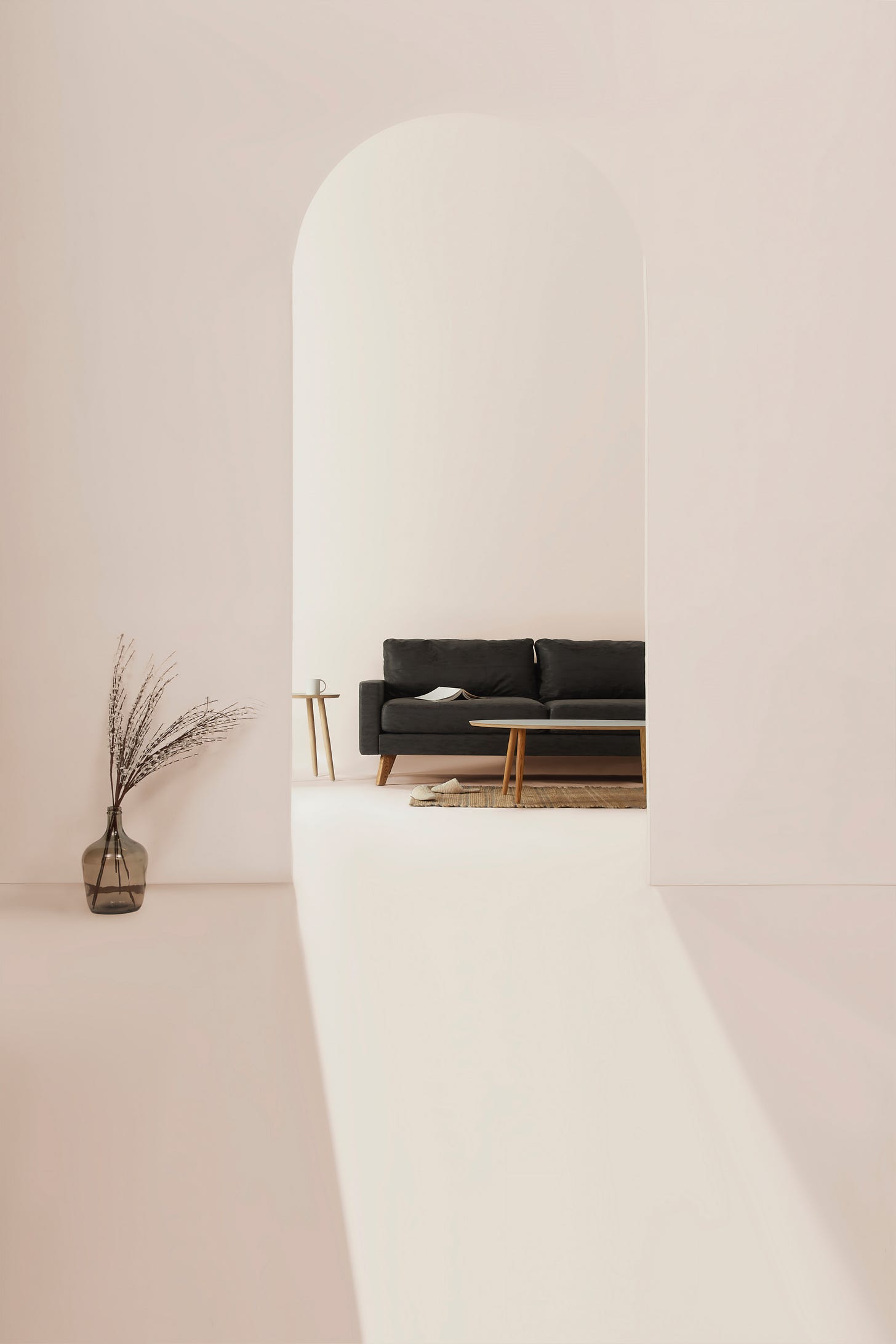KANSO: a stress free life
Why you should adopt this Japanese Zen philosophy to reach tranquillity
There are seven ‘pillars’ that one must attain in order to reach the state of Wabi Sabi; finding beauty in imperfection. One of which is KANSO, the fundamental admiration for the simplicity of life. It emphasises it’s teachings on minimalism and the elimination of clutter, to be void of over complication that could possibly lead to a peaceful and satisfying life.
Kanso’s influence toward’s a variety of creative fields such as architecture, fashion, and product design is evident. Many of whom incorporate similar characteristics in their products or even their ethos; such as pastel colours, clean lines, and function. And in today’s world, the over-consumption of stimuli and the demand to maintain a balance between daily tasks, work, and social life may be all too much. A break from the hectic lifestyle may just be what you need.
The Philosophy of Kanso
Kanso’s origins can be traced back to the Zen Buddhism tradition, which arrived in Japan from China in the 12th century. Although, the concept was formally introduced to Japan by tea ceremony master Murata Jukō who highlighted its importance within the art of tea, believing that simplicity and minimalism were essential to creating a tranquil and harmonious ceremony.
Over time, Kanso had developed into a popular aesthetic in Japanese culture, as something that is applicable to various art forms. Designs and products are kept to their most basic core, usually plain with a natural feel, spotlighting the simplicity of normal day-to-day objects.
However, Kanso is not limited to solely physical things but can be applied mentally as stated by Daishin Hashimoto
“We don’t really use it as a word… We subconsciously think of the concept and just do it”
An example of this is, a major Japanese influencer Marie Kondo who has developed a successful brand in her name where she has used Kanso as a foundation for her own interests of organisation consultancy, writing and TV presenting. She has gone on to present her own Netflix show “Tidying up with Marie Kondo” which became instantly successful hitting Netflix’s No 1 non-fiction release and several award nominations such as two Emmys.
Simplicity, clarity, and reducing the 'negative space’ may benefit whomever as the distractions and extra information your brain undergoes will be reduced. One step closer to being zen.
Kanso in the Creative Industry
The essence of Kanso is applied throughout the existence of the creative industry, whether before or after the principals of organisation, cleanliness, and clarity were categorised into the term ‘Kanso’. In fashion, the concept has influenced the trend towards understated elegance, with designers such as Jil Sander and The Row creating simple, classic silhouettes and neutral colours.
Another major Example of this can be seen with the popular Japanese clothing franchise UNIQLO, who Tadashi Yanai (the founder) has stated on Indigo9digital’s article that
“We don’t chase trends. We are about clothing that’s made for everyone. We will never, ever offer disposable clothing”
UNIQLO’s multitude of products can still be trendy today as seen with a recent trend on TikTok ‘#airism’ (16.3m views) many users have outwardly expressed their satisfaction and contentment about the quality, appearance and affordability of the items provided. The trend shows that amongst the eccentric designs, and vivacious colours offered by many other brands such as ‘Corteiz’ or ‘Unknown’, the perfection of basic and sleek designs can still be relevant.
You also have Kanso’s values on the reduction of clutter coincides with minimalism; specifically in architecture. Many designers such as AD-Arch and Deltastudio use sleek designs and basic colour palettes in order to explore the interaction between human and objects during practice.
Another TikTok trend #organisation (1.1B views) could possibly come under the umbrella of Kanso, once again the elimination of clutter and mess may be all that’s needed to keep your mind healthy and stable, stated by interviewee Jasper Marquez
“I figured out for myself that I tend to be satisfied with not having a lot in my apartment”
Maybe we don’t need a whole lot in our living or workspace. Yes, expressing ourselves can be done through how we choose to layout our environment, but by maintaining order through organisation, clarity, and simplicity we may be able to use Kans
o as a ‘positive disconnect’ from distractions.
Kanso in the age of Chaos
The constant reminder of self-improvement, betterment, and productivity can be all too overwhelming. It may be difficult to maintain a Kanso approach to life with many influencers promoting that living the ‘always busy’ lifestyle is the only path to success and satisfaction (we are not saying be lazy).
The more recent and on-going trend of self-improvement on TikTok has over 16.4 billion views under the hashtag. By incorporating Kanso, we can utilise the element of mindfulness as a way to improve the way we approach things in life. We project our own perception of ourselves to others, overthinking of what to do in certain situations, but sometimes its just better to keep things minimal making us feel more relaxed.
Nozumu Sugiyama discusses how he felt about taking life through a Kanso approach
“like you only have like the important stuff in it and then you don't have anything other than that. So like, I can definitely be relaxed”
Well if you ever get those days where your mind is so overcrowded you literally shut-down. Do you sometimes feel unable to function for an ‘x' amount of time and feel guilty for being unproductive?
Maybe a break from all the distractions is all that is needed. Give yourself a plan that lets you accomplish your goals whilst eliminating any of the extra steps on the way. Remember to admire the simple things in life and take it one step at a time.




